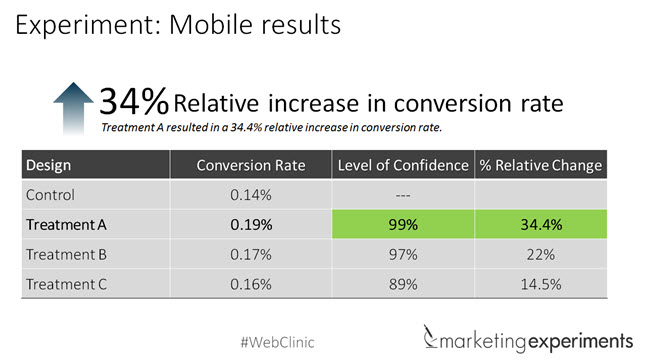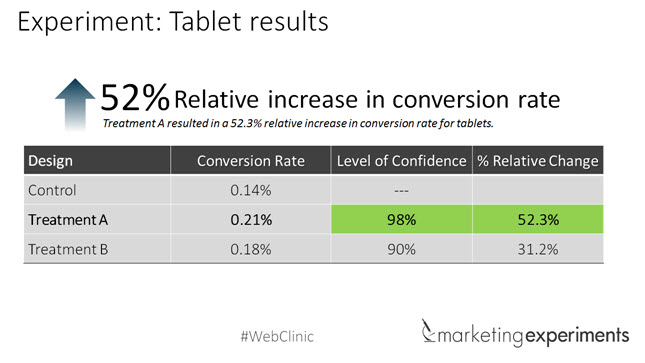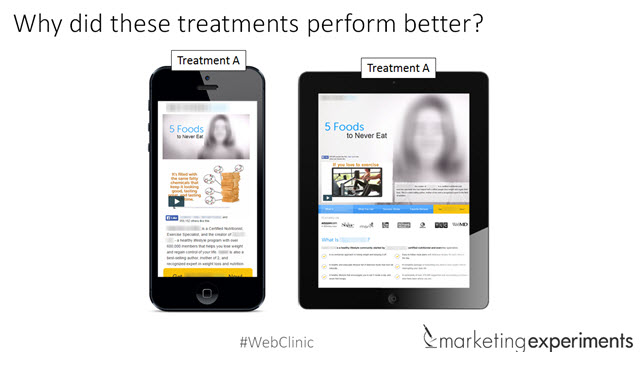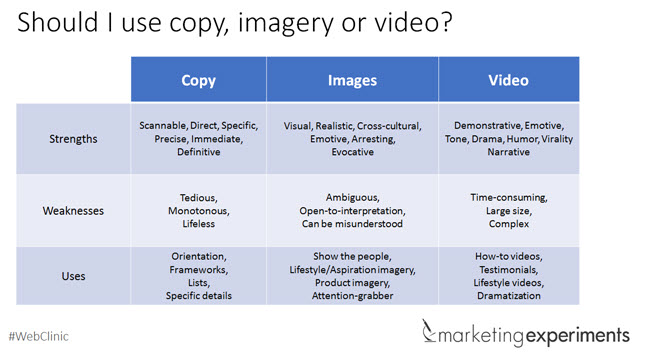Video is emerging as the new darling of content marketing, and it makes sense.
As a medium, video delivers information customers want about a business quickly and inexpensively thanks to ever-evolving tech.
But how does using video in your marketing strategy stack up when you add the complexity of rendering across multiple devices?
Throw a smartphone or tablet into the mix, and your customer experience can get messy fast.
So in today’s MarketingExperiments Blog post, I wanted to share with you an interesting experiment from our latest Web clinic that increased conversion 34% by putting video to the test in a multidevice experience.
Now before we drive on any further, let’s look at the background on the experiment:
Background: A company offering a variety of dieting programs and memberships with the goal of helping their audience lead a healthier lifestyle.
Goal: To increase landing page membership conversions on mobile and tablet devices.
Primary Research Question: Which use of video will generate the highest conversion rate?
Test Design: A/B variable cluster
Here are screenshots of the Control and Treatments on mobile and tablet:
In the Control above, the MECLABS research team hypothesized that the design overall fails to deeply connect the video content with the audience. The team reasoned that a connection to the authority was missing (the personal source behind the content), which would give a visitor the motivation to engage.
The Treatments utilize a few design layouts to help build the missing authority and rapport with users.
As you can see from the results, Treatment A outperformed the Control by a 34.40% relative difference in conversion.
So how did things pan out on tablet?
Treatment A also saw a significant increase in conversion on tablets.
What you need to know: Medium compliments experience
The million dollar question here is what made this treatment a winner?
It’s tough to say from only one test, but one key observation according to the MECLABS research team is that Treatment A rearranges the sequence of information to give priority to the main content immediately after building the problem and establishing authority.
Consequently, this particular sequence appears to have greater appeal to the logical narrative in the mind of the customer and, thus, generates a greater response from users.
In summary, testing can help you choose the right vehicle for sharing your story.
Also, if you’re interested in learning more about how testing and optimization can aid your mobile marketing efforts, feel free to check out today’s newly released Web Clinic, “Incorporating Video in Your Mobile Strategy.”
John Tackett is the Partnership Content Manager for MECLABS. You can follow him on Twitter @JohnTackett01.
You may also like
Landing Page Optimization: How a navigation test increased leads 34% [More from the blog]
Email Marketing: How responsive design might improve your emails [More from the blog]
Mobile Marketing: E-commerce site uses responsive design to achieve an 8% lift in cart abandonment campaign [Case study]










Well, in my case, I can say that the mobile visitors bring more orders and money from advertising that the regular desktop ones.
Only after checking the statistics of my website in analytics I realized that mobile visitors seem to be more profitable.
I forgot to mention that on the site I mentioned, I sell ebooks since 2004.
Lately, Google urged me to make a mobile version of my website and I received a raise in earnings right away.
The raise is not impressive, but I can say that mobile visitors click more ads and order more often.